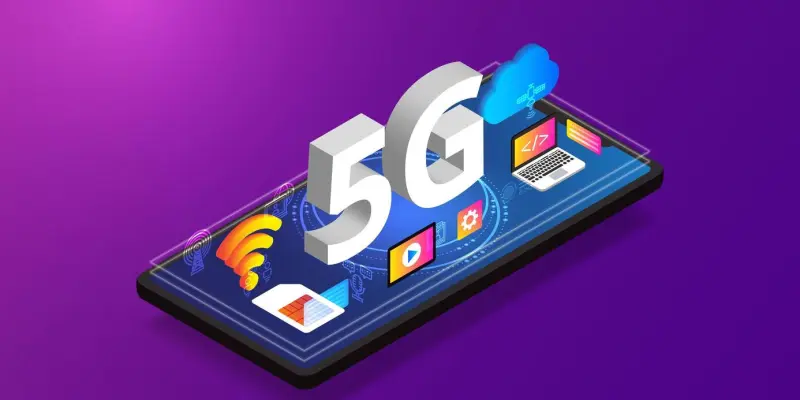Dish Network’s recent integration of 5G technology into its satellite TV services marks a significant milestone in the evolution of digital entertainment. This transformative shift promises not just to dramatically enhance media consumption but also to deliver substantial environmental benefits. By harnessing the power of 5G, Dish Network aims to offer better connectivity, reduce energy consumption, and make meaningful contributions to global sustainability efforts. The strategic move underscores Dish’s commitment to aligning technological advancements with ecological considerations, showcasing its role in the broader push toward greener digital solutions.
Environmental Impact of 5G Technology
The adoption of 5G technology by Dish Network is a game-changer in terms of energy efficiency. With 5G networks designed to be far more energy-efficient than their predecessors, the power consumed per unit of transmitted data is significantly reduced. This notable reduction in energy use directly translates to lower carbon emissions, a critical factor in aligning with global climate change initiatives. As the demand for data continues to skyrocket, these enhanced efficiencies present a formidable step in mitigating the environmental impact associated with digital infrastructure.
Furthermore, 5G technology contributes to a marked reduction in the reliance on fossil fuels needed to power data centers and networks. By optimizing energy use, Dish Network is playing a pivotal role in the conservation of natural resources. This shift is undeniably crucial as the industry grapples with the environmental challenges posed by ever-increasing connectivity demands. The company’s move towards more sustainable practices in digital entertainment reflects a robust commitment to addressing these challenges head-on, reinforcing the significance of eco-friendly technological integration.
Bridging the Digital Divide
One of the most consequential benefits stemming from the integration of 5G technology into satellite TV is its potential to bridge the existing digital divide. Facilitating connectivity in remote and underserved areas becomes significantly more achievable with 5G, granting previously isolated communities access to a wealth of information and entertainment. This heightened level of connectivity plays a critical role in promoting social inclusion, ensuring that people regardless of their geographic location can reap the benefits of the digital revolution.
By delivering reliable and high-speed internet access, 5G technology supports socio-economic development in these isolated regions. It paves the way for access to essential educational resources, healthcare services, and new economic opportunities. The ensuing growth leads to tangible improvements in the quality of life for individuals in these areas. Therefore, Dish Network’s strategic move to incorporate 5G into its services signifies an earnest effort toward crafting a more inclusive and connected world. This inclusive approach embodies the next frontier in digital equality, ensuring that the digital benefits extend to every corner of society.
Advancing Future Connectivity
The integration of 5G technology into satellite TV services by Dish Network lays a strong foundation for future advancements across various sectors. In the realm of urban planning, 5G facilitates the development of smart cities by enabling real-time data collection and thorough analysis. This capability can lead to more efficient resource management, an enhancement in public services, and an overall improved quality of life for urban inhabitants. The integration of 5G technology into cities’ infrastructure heralds a new era of intelligent urban planning and sustainable living environments.
Additionally, 5G technology can play a transformative role in disaster management by providing critical communication infrastructure. This advanced infrastructure ensures that emergency services can respond swiftly and effectively in times of crisis. On another front, 5G promises to revolutionize telemedicine by making remote consultations and real-time patient monitoring more feasible than ever. This potential is particularly valuable for improving healthcare delivery to remote areas. Through the adoption of 5G, Dish Network positions itself as a leader in developing a digitally inclusive and seamlessly interconnected future, with far-reaching implications for everyday life and emergency responsiveness alike.
Economic Implications
The economic implications of incorporating 5G technology into satellite TV are both expansive and profound. The development of the necessary 5G infrastructure sparks a wave of job creation and serves as a catalyst for technological innovation. As businesses and industries embrace 5G capabilities, they can unlock new heights of productivity and efficiency, which will inevitably lead to broader economic growth and enhanced prosperity. The ripple effect of these advancements ensures that the benefits of 5G are felt across multiple economic strata, driving forward industrial competitiveness and economic robustness.
Widespread connectivity offered by 5G opens the door to a plethora of new business opportunities. The high-speed, low-latency characteristics of 5G networks allow companies to develop innovative services and products that were previously unimaginable. This fosters a competitive market landscape where advancements are continuously propelled forward, spurring further economic development. Consequently, Dish Network’s investment in 5G technology is astute strategically, presaging significant economic benefits for both the company and the broader market. It heralds an era of technological dynamism, where economic growth is inextricably linked with cutting-edge connectivity solutions.
Security and Sustainability
Dish Network’s recent introduction of 5G technology into its satellite TV services represents a major leap forward in digital entertainment. This significant development promises to significantly improve how we consume media while also delivering considerable environmental advantages. By leveraging the capabilities of 5G, Dish Network intends to provide enhanced connectivity and reduce energy consumption, thereby contributing to global sustainability. This strategic decision highlights Dish’s dedication to integrating technological innovation with environmental responsibility. By focusing on greener digital solutions, Dish illustrates its commitment to aligning with broader ecological goals. This move not only benefits consumers with better service quality but also demonstrates a forward-thinking approach to tackling environmental challenges. Overall, Dish Network’s 5G integration is a testament to the company’s vision of merging cutting-edge technology with eco-friendly practices, underscoring its role in advancing both digital and environmental progress.

